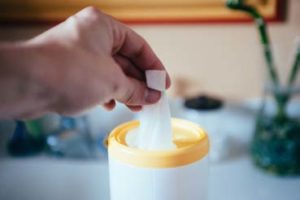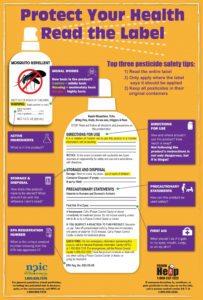As everyone is trying to figure out how to educate children during the COVID-19 pandemic, the question on everyone’s mind is how to do this by keeping schools clean? The guidelines from CDC, For a Safe Return to School in Fall 2020 and the Texas Education Agency’s two documents Public Health Planning Guidance and School Reopening Guidance Summary give some advice on how to open your school; however, it’s limited in the actual directions of what, where, and when to clean. In an IPM program the first step is to understand the pest you are dealing with and come up with your solutions. For us it’s understanding the virus and how it spreads, to develop a plan on which areas of the school need deep cleaning everyday or regular cleaning that has been done by custodial staff in the past. Many of the steps outlined can seem extreme, but it all depends on where you are located and what is going on in your community as relates to COVID positive cases on what you need to implement.
The Virus
Coronaviruses are a large family of viruses that are known to cause illness ranging from the common cold to more severe diseases such as Middle East Respiratory Syndrome (MERS) and Severe Acute Respiratory Syndrome (SARS). The novel coronavirus (COVID-19) is a new strain of coronavirus that has not been previously identified in humans, which has led to a variety of changing information. COVID-19 is thought to spread mainly through close contact from person-to-person. Some people without symptoms may be able to spread the virus. It may be possible that a person can get COVID-19 by touching a surface or object that has the virus on it and then touching their own mouth, nose, or possibly their eyes. This is not thought to be the main way the virus spreads, instead it is those airborne droplets we exhale every minute of the day. Check out this article, COVID Analysis, for a visual on how the virus can be spread indoors.
How to Protect Staff and Students
In all the guidelines that are being offered to help schools open, the one term I feel most have lost sight of is “mitigate”. The definition of mitigate is to make less severe, serious, or painful. In most cases this means good cleaning practices, social distancing (keep out my personal space) and wear a face covering over the mouth and nose. During flu season, school nurses and administrators remind kids to wash their hands, cover their cough, stay home if you are sick. These are the same principals we all need to remember with COVID.
The larger challenge for schools is ensuring everyone has enough personal space. Instead of four students sitting at a lab bench in chemistry class – it will be one student. Cafeterias will no longer serve buffet style, instead it will be served in the classroom, or box style with limited human contact.
 One of the main pathways’ researchers have determine COVID is spread indoors is through those heavy droplets we exhale and then “float” in the air. One of the recommendations is to open windows and doors. There are two reasons we typically do not do that in TX; 1) it’s hot and 2) what pest will fly or crawl in. Instead, think about the ventilation system on each campus, make sure filters are changed, vents are clean, and more importantly the return air area is clean as well. If the weather permits, let kids outside to play or read. Also make sure staff understands that in the teachers lounge they too must follow all the guidelines as well.
One of the main pathways’ researchers have determine COVID is spread indoors is through those heavy droplets we exhale and then “float” in the air. One of the recommendations is to open windows and doors. There are two reasons we typically do not do that in TX; 1) it’s hot and 2) what pest will fly or crawl in. Instead, think about the ventilation system on each campus, make sure filters are changed, vents are clean, and more importantly the return air area is clean as well. If the weather permits, let kids outside to play or read. Also make sure staff understands that in the teachers lounge they too must follow all the guidelines as well.
Cleaning, Disinfecting, and Sanitizing
These three terms have been used so often and a lot of people believe that by doing these processes you can completely kill the COVID virus. At the same time, many believe that if you engage in these processes that you can keep the COVID virus away for days, which you cannot. Schools are being asked to mitigate the spread of the virus, not eradicate the virus. Let us look at the three terms:
- Cleaning is the process of removing unwanted substances, such as dirt, infectious agents, and other impurities, from an object or environment.
- Disinfection the process of cleaning something, especially with a chemical, to destroy bacteria.
- Sanitize make clean and hygienic; disinfect
The Department of Family and Protective Services and Department of State Health Services define sanitizing. They recommend for the sanitizing process to be effective; you must follow these four steps in order:
- Washing with water and soap at least 2 minutes for hands
- Rinsing with clear water.
- Soaking in or spraying on a disinfecting solution (at least two minutes). Rinsing with cool water only those items that children are likely to place in their mouths.
- Allowing the surface or article to air-dry.
DSHS has this DYI- disinfecting solution:
- One tablespoon of regular strength liquid household bleach to each gallon of water used for disinfecting such items as toys and eating utensils (high touch items)
- One-fourth cup of regular strength liquid household bleach to each gallon of water used for disinfecting surfaces
 When it comes to cleaning materials the next big question is the use disinfecting wipes by the staff. While these are convenient, cleaning wipes require some common sense be used if you choose to use these in your school district. First, they are pesticides under the U.S. EPA Federal Insecticide Fungicide Rodenticide Act (FIFRA). Under FIFRA pesticides must have two statements; 1) signal word (Caution, Warning, Danger) and 2) child hazard statement (keep out of reach of children), these requirements are to alert the user that these products require personal protective equipment and cautionary use around children. Second, using these cleaning wipes for a quick cleanup is great, but to keep things like door handles, common use items (fridge handles, faucet handles), and in food preparation areas use the sanitation steps above. Should you wear gloves when using these wipes? If teachers and staff are going to use these daily to wipe down the head phones, keyboards, desk tops, paint brushes, microscopes, etc. (items the kids touched) then yes, they should wear a pair of disposable gloves that way they are protected. Our hands are very porous, hence why it’s so easy to transfer the cold and flu, but we also must protect ourselves from cleaning solutions entering our system as well.
When it comes to cleaning materials the next big question is the use disinfecting wipes by the staff. While these are convenient, cleaning wipes require some common sense be used if you choose to use these in your school district. First, they are pesticides under the U.S. EPA Federal Insecticide Fungicide Rodenticide Act (FIFRA). Under FIFRA pesticides must have two statements; 1) signal word (Caution, Warning, Danger) and 2) child hazard statement (keep out of reach of children), these requirements are to alert the user that these products require personal protective equipment and cautionary use around children. Second, using these cleaning wipes for a quick cleanup is great, but to keep things like door handles, common use items (fridge handles, faucet handles), and in food preparation areas use the sanitation steps above. Should you wear gloves when using these wipes? If teachers and staff are going to use these daily to wipe down the head phones, keyboards, desk tops, paint brushes, microscopes, etc. (items the kids touched) then yes, they should wear a pair of disposable gloves that way they are protected. Our hands are very porous, hence why it’s so easy to transfer the cold and flu, but we also must protect ourselves from cleaning solutions entering our system as well.
Many administrators have been introduced to the EPA List N: Disinfectants for Use Against SARS-CoV-2 (COVID-19) and many IPM Coordinators are now being asked if the products used on this EPA list fall under the school IPM program? The short answer is no – in TX, the school IPM rules only pertain to pests that harm buildings, turf, humans, or other living things. The custodial cleaning and disinfection products that are used in schools have always been registered as pesticides under FIFRA. No matter the products you select you still need to train staff on the proper use of these products which includes reviewing the Safety Data Sheets. While that is not part of the school IPM rule, it is part of the Right to Know and Hazard Communication acts that require employers to ensure their employees are adequately trained.
Do I need to post? No, not unless one of the products you use require you to do so. If you are doing deep cleaning, using a misting type device, or some other type of cleaning that requires the employees to be protected, then you might want to think about notifying employees of these efforts. Again, read that pesticide label, the label is the law.
 Finally, all cleaning and disinfecting products can be harmful to humans if used improperly. Improper use can be as simple as not wearing the right personal protective equipment to spilling a bottle of cleaner. If the product you are using has a signal word and keep out of reach of children that is the first step to understanding personal use protection. While we all want schools to open, we must also understand that in these indoor environments we must also be cautious about how many products we are using inside each room each day. In this white paper by Beyond Pesticides, The Intersection of Pesticides and the New Normal under Coronavirus they discuss many of the ways students and staff can be harmed by too much use of common cleaning products and hand sanitizers.
Finally, all cleaning and disinfecting products can be harmful to humans if used improperly. Improper use can be as simple as not wearing the right personal protective equipment to spilling a bottle of cleaner. If the product you are using has a signal word and keep out of reach of children that is the first step to understanding personal use protection. While we all want schools to open, we must also understand that in these indoor environments we must also be cautious about how many products we are using inside each room each day. In this white paper by Beyond Pesticides, The Intersection of Pesticides and the New Normal under Coronavirus they discuss many of the ways students and staff can be harmed by too much use of common cleaning products and hand sanitizers.
In August I will be working with EPA, TASB and others to offer some additional webinars on this topic and back to school pests in general, so watch your email for those announcements.

 .
.